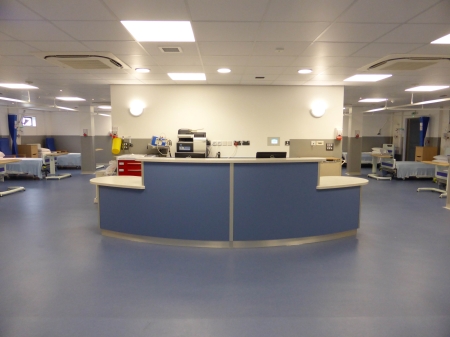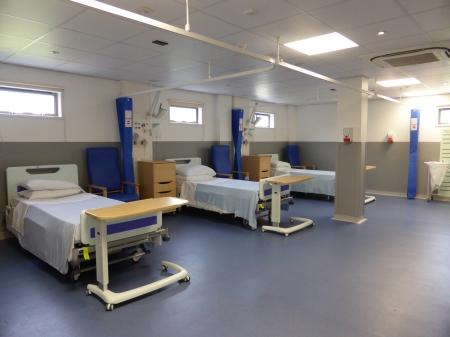Princess Royal University Hospital in Kent recently found itself with what seemed like an insurmountable problem.
Increasing patient numbers were stretching the limits of the hospital’s facilities. A critical decision unit, where patients could be cared for while an assessment is made to decide where in the hospital they should be treated, was urgently needed.
Unfortunately, the speed with which the building was needed was not the only problem.
This really is an excellent example of how modular can offer innovative solutions for complicated construction projects
To provide an optimum service, the location of the unit was vital. By far the most-effective placement for it was in the existing ambulance bay adjacent to the Accident and Emergency ward.
However, from a construction point of view this area offered several challenges of its own. Hemmed in on three of its four sides, and sitting partly above the entrance to the underground car park, any solution would need to overcome problems of severely-limited space and weight distribution.
Wernick Buildings won the tender for the project with a modular approach that could address these issues.
Senior building surveyor, Wayne Everitt, from architects, Wilby and Burnett, said: "A traditional build would have been too heavy and would be over the bridge design load. We also had the advantages of speed of manufacture and onsite fit-out and the ability to remove the structure with relative ease should the requirement change.”
The first problem was how to prepare foundations when only two thirds of the building could rest on solid ground. This was solved by a specially-designed cantilever system of steel beams supporting the remaining third.
Some of the difficulties faced by the project were negated simply by the nature of modular construction. As the modular bays were built off site, the only challenge the limited space posed was during craning. There was just enough space to allow the crane to sit within the hospital boundaries and drop in the eight modules from the lorries delivering them on the adjacent road.
With the modules in place, and a link established to the existing building, the final stages of fitting out could begin, bringing the unit up to HTM and DDA compliance. The fit out included bedhead trunking incorporating medical gasses, fire escape ramps and nurse stations. The inclusion of air conditioning also proved to be very popular with staff, providing a very comfortable environment in the building, especially in the heat of summer.
Given enough time, traditional construction methods would also have been able to deliver a building of comparable quality, but the speed and flexibility of the solution provided by a modular approach comes into its own for urgent and difficult projects.
Traditional methods of construction may have taken more than twice as long to deliver this building, and that’s without factoring in possible weather delays
Everitt said: "Thanks to a well-run operation by all parties involved, the project was achieved within eight weeks from breaking ground through to completing the building, including all services connections to the main hospital.”
Simon Reffell, director of Wernick Buildings, added: “Traditional methods of construction may have taken more than twice as long to deliver this building, and that’s without factoring in possible weather delays.
"Quite apart from having the extra facilities that much sooner, a shorter build time also reduces the disruption to the rest of the hospital. This really is an excellent example of how modular can offer innovative solutions for complicated construction projects.”


